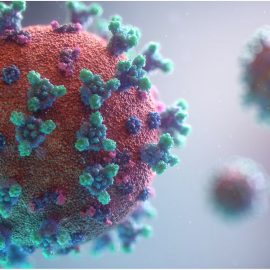
This is a free excerpt from one of Shortform’s Articles. We give you all the important information you need to know about current events and more.
Don't miss out on the whole story. Sign up for a free trial here .
What exactly is gender-affirming health care? What are the medical terms that surround this topic?
Gender-affirming care for children has been a topic of heated debate in the last few years, with lawsuits and laws ongoing in the US and UK. In order to fully understand the debates, it’s important to learn the terminology around gender-affirming care.
Continue reading to learn the terms that go along with gender-affirming health care.
Defining Gender-Affirming Care
Gender-affirming health care is the various treatments and procedures that allow a transgender person to physically “transition,” or to alter their bodies to ease discomfort and align with their gender identity. In recent years, gender-affirming care has faced a number of legal challenges in countries like the United States and United Kingdom.
Medical Research Behind Gender-Affirming Care
To fully grasp what gender-affirming health care is and how it works, it helps to understand some of the basic terminology and theories behind what these treatments are and how they work. There’s a great deal of debate on the meaning of these particular words, but to limit the scope of this article, we’ll refer to the definitions created by the American Psychiatric Association (also referenced here)—definitions that match the general medical consensus.
Defining Gender and Sex
Gender identity: An internal sense of being a man, woman, or another gender (such as gender fluid). For example, some part of Jonathan’s sense of self feels comfortable and secure in the fact that he’s a man—therefore, that’s his gender.
Gender expression: How someone expresses their gender socially—the gendered components of their appearance, name, and pronouns that they present to others. For example, Jonathan’s name, his use of “he/him/his” pronouns, and how he looks to others all give off social cues that he’s a man.
Sex: Biological categories of sex characteristics as well as a person’s hormonal/genetic makeup. The two categories of biological sex are male and female. For example, Jonathan has a penis, testicles that produce testosterone, and XY chromosomes. These attributes all fit into the category of the male sex.
Gender Nonconformity and Gender Dysphoria
Gender nonconformity: Gender identity and expression that doesn’t match with the gender someone was assigned at birth based on sex (the male sex assigned the gender of “man” at birth and the female sex assigned the gender of “woman” at birth).
Gender dysphoria: A collection of symptoms related to distress or dissatisfaction with some component of gender identity, gender expression, or sex. These symptoms often involve a sense of incongruence between the way someone is and the way they believe they should be. Gender dysphoria (especially when untreated) is linked to higher rates of depression and suicide.
For example, Mark experiences gender dysphoria. He experiences distress using a name, pronouns, and clothing that are associated with men. He also experiences distress related to his primary and secondary sex characteristics—he doesn’t like to think about or acknowledge his penis. In addition, he feels as if some essential part of himself is not a man.
Medical research consistently shows that gender-affirming care for patients practicing gender nonconformity or experiencing gender dysphoria is a cost-effective and medically necessary form of treatment that improves a patient’s overall quality of life. It shows that this care can reduce depression, suicidality, and gender dysphoria in adults and youth. The American Medical Association and the American Association of Pediatricians agree that gender-affirming care is evidence-based and medically necessary.
Though there is wide medical consensus on the effectiveness of gender-affirming care, it’s still a relatively new and quickly developing field of medicine—and doctors acknowledge the relative lack of research on the cause of gender nonconformity and gender dysphoria as well as the mechanisms and long-term effects of gender-affirming care.
Laws Regarding Gender-Affirming Care
Existing laws regarding gender-affirming care vary from country to country, though they tend to fall into one of four categories:
1) Protected right: Some countries like Argentina and Malta have passed laws uniformly guaranteeing transgender people the right to receive gender-affirming care. These laws attempt to make gender-affirming care available and accessible to anyone who seeks it out.
2) Limited right: Many countries have laws that allow access to gender-affirming care under specific circumstances—for example, minimum ages, psychiatric diagnoses, and government approval. The effects of these limitations vary. For example, Denmark’s limitations on gender-affirming care are relatively consistent with guidelines recommended by transgender health organizations. On the other hand, China imposes far stricter limitations that prevent many from receiving gender-affirming care.
3) Criminal offense: A minority of countries including Indonesia and Kuwait have laws that make gender-affirming care illegal.
4) Ambiguous: Many countries don’t have consistent federal laws regarding gender-affirming care. In these countries, access to gender-affirming care is determined by a combination of court rulings, local laws, and guidelines from medical associations. This is the case in the United States, where local laws or directives (and court interpretations of these laws) determine access to gender-affirming care.

Want to fast-track your learning? With Shortform, you’ll gain insights you won't find anywhere else .
Here's what you’ll get when you sign up for Shortform :
- Complicated ideas explained in simple and concise ways
- Smart analysis that connects what you’re reading to other key concepts
- Writing with zero fluff because we know how important your time is






